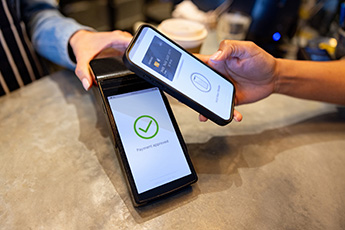There are all sorts of fabrics to choose from when it comes to clothing and fashion trends. This year, Vogue says some of the top fashion trends are contemporary oatmeal (beige), tie dye, lace, Seventies-era crochet, fisherman weaves, and macram? appliqu? to name a few.
In banking, there are plenty of other trends to take note of, particularly when it comes to person-to-person (P2P) payments. These transactions provide a convenient way to move money and seem fairly rooted in the US financial fabric these days. In fact, some $1T changed hands through P2P systems in 2017 alone. This is a great reflection point for community banks to become educated on real-time and faster payment products.
Community banks looking at P2P platforms have a variety of solutions available. To start with, you'll need to reflect on your business strategy, balancing pros and cons, costs and benefits.
There are two basic types of P2P products: those offered by a bank, and those that leverage bank accounts and infrastructure, but operate primarily outside the banking environment.
First off, you'll find a few bank-centric options. Zelle's solution was developed by a group of large financial institutions and is probably the most well-known of these. It uses the debit card infrastructure to make it appear real-time to the end users, but is actually settled in batch, as other card transactions work. It uses either its own app or a bank's. Zelle also has a huge marketing budget, which means customers often recognize it and that banks should expect to pay for that familiarity.
Fintech companies offer a competing set of P2P solutions that use a bank's payment infrastructure, but take the transactions outside its walls. While this flexibility may entice some, fintechs are still seen as competitors to many. Some options here include PayPal's Venmo, which offers brand recognition and established user accounts, as well as Twitter and Facebook Messenger, which let other providers leverage bank networks to process transactions. People Pay is another and it works in real-time, but it's a send network only. To receive money, customers need a MasterCard or Visa debit card. Popmoney is yet another option that moves money between bank accounts.
Another well-known one is Square's offering, Cash App. It is well integrated with the company's deposit and savings offerings, so banks should keep an eye on this one.
Another twist is a digital wallet, such as those offered by Apple Pay, Samsung Pay, and Google Pay. These give users P2P and an in-store wallet function that's connected to accounts and cards. Like offerings from Twitter and Facebook, these come with an existing potential user base.
With all of these offerings, research and risk analysis are critical. Before you implement any offering, you must identify your bank's strategy and your customers' needs. Another key point is to wait and see how all of this shakes out. You might not even need to make a decision to offer a P2P product right now.
As a non-competitor to community banks, we are up-to-speed on what is happening in payments, including P2P and business-focused platforms. If you have interest in learning more, feel free to reach out and we would be happy to chat about options.




